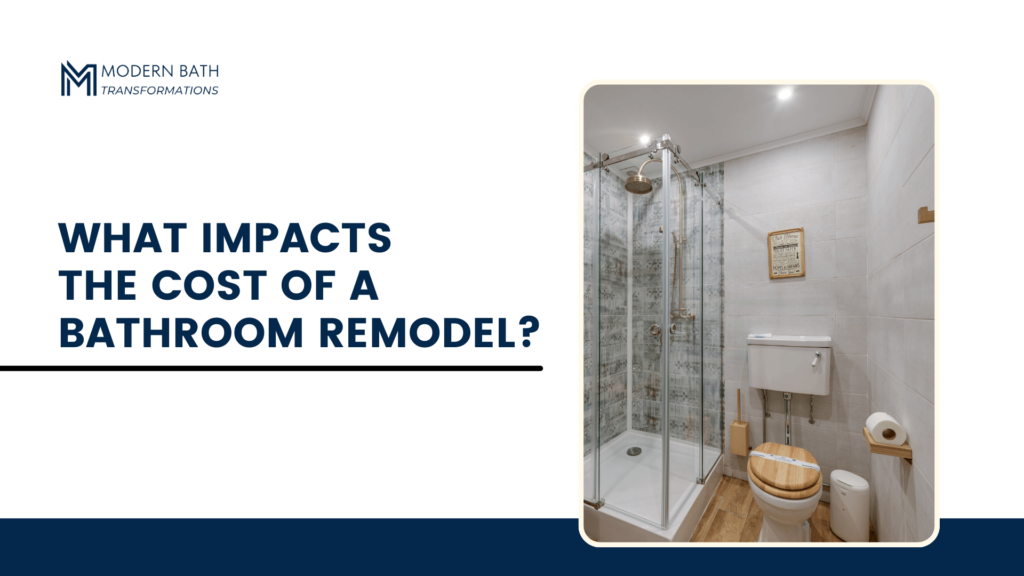A bathroom remodel can transform one of the most important spaces in your home into a more functional, comfortable, and visually appealing area. However, the cost of remodeling a bathroom can vary widely, depending on several key factors. Understanding what influences these costs can help you plan your budget more effectively and make informed decisions about your project.
This guide explores the primary factors that impact the cost of a bathroom remodel and offers tips to manage expenses.
1. Size of the Bathroom
The size of your bathroom is one of the most significant factors affecting the overall cost.
- Small Bathrooms: Typically cost less to remodel due to fewer materials and fixtures needed. A small bathroom remodel can range from $3,000 to $10,000.
- Medium-Sized Bathrooms: These require more materials and labor, with costs ranging from $10,000 to $25,000.
- Large Bathrooms: Master bathrooms with additional features, like double vanities or separate shower and tub areas, can cost upwards of $20,000 to $50,000 or more.
2. Scope of the Project
The extent of the remodeling work plays a major role in determining the cost.
- Cosmetic Updates: Replacing fixtures, repainting, or upgrading hardware typically costs less.
- Partial Remodel: Involves replacing major components like the shower or vanity while keeping the layout intact.
- Full Remodel: Includes layout changes, plumbing, and electrical work, significantly increasing costs.
3. Quality of Materials
The type and quality of materials used can dramatically impact the cost of a bathroom remodel.
- Budget Materials: Laminate countertops, ceramic tiles, and prefabricated fixtures are cost-effective.
- Mid-Range Materials: Quartz countertops, porcelain tiles, and custom vanities strike a balance between quality and affordability.
- High-End Materials: Marble, natural stone, and designer fixtures can significantly increase the overall cost.
4. Labor and Professional Services
Labor costs are another major factor, often accounting for 40%–60% of the total remodeling budget.
- DIY Projects: Taking on simple tasks like painting or installing hardware can reduce costs.
- Professional Services: Plumbing, electrical work, and tiling require skilled labor, which increases expenses. Hiring licensed professionals ensures quality work and compliance with building codes.
5. Plumbing and Electrical Work
Moving or upgrading plumbing and electrical systems can significantly add to the cost of a bathroom remodel.
- Minor Changes: Replacing fixtures without altering the layout is more affordable.
Major Changes: Relocating plumbing lines or upgrading electrical panels can cost thousands of dollars.
6. Bathroom Fixtures and Features
The choice of fixtures and features plays a crucial role in determining costs.
- Basic Fixtures: Standard toilets, sinks, and bathtubs are budget-friendly.
- Luxury Fixtures: Freestanding tubs, rainfall showerheads, and custom vanities can increase costs.
- Additional Features: Heated floors, smart mirrors, and high-tech toilets add both functionality and expense.
7. Flooring and Wall Materials
The type of flooring and wall materials you choose also impacts costs.
- Affordable Options: Vinyl or laminate flooring and moisture-resistant paint are budget-friendly choices.
- Mid-Range Options: Porcelain or ceramic tiles are durable and moderately priced.
- High-End Options: Natural stone and intricate tile patterns can significantly raise the cost.
8. Permits and Inspections
Depending on the scope of your project, permits and inspections may be required, which can add to the overall cost.
- When Permits Are Needed: Structural changes, plumbing upgrades, or electrical work often require permits.
- Permit Costs: Typically range from $100 to $500, depending on local regulations.
9. Geographic Location
Where you live can greatly influence the cost of labor, materials, and permits.
- Urban Areas: Higher labor and material costs due to increased demand.
- Rural Areas: Costs may be lower, but availability of certain materials or skilled labor may be limited.
10. Unexpected Issues
Hidden problems discovered during the remodel can lead to additional expenses.
- Water Damage: Repairing leaks, rot, or mold can add to the cost.
- Outdated Plumbing or Wiring: Upgrading old systems to meet modern standards may be necessary.
Tips for Managing Bathroom Remodel Costs
- Set a Realistic Budget: Allocate funds for materials, labor, and unexpected expenses.
- Prioritize Needs: Focus on essential upgrades first, like plumbing and fixtures.
- Shop Smart: Look for sales, discounts, or gently used materials to save money.
- DIY Where Possible: Take on simple tasks to reduce labor costs.
- Work with Professionals: Hire experienced contractors for complex tasks to avoid costly mistakes.
- Plan Ahead: Finalize your design and materials before starting to avoid change orders, which can increase costs.
Conclusion
The cost of a bathroom remodel is influenced by factors like the size of the space, the quality of materials, and the scope of the project. By understanding these factors and planning carefully, you can create a beautiful, functional bathroom that fits your budget.
Whether you’re tackling a small update or a complete overhaul, focusing on your priorities and working with skilled professionals will help you achieve the best results for your investment.

